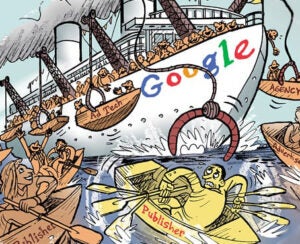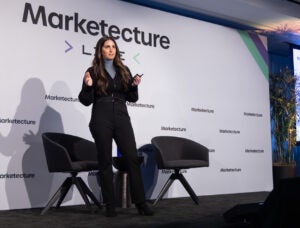 Scale continues to be one of the most challenging aspects of native advertising, and a growing number of companies are working to solve it. As advertisers look for solutions, a number of trends are beginning to emerge, according to a new report from the research firm Altimeter Group.
Scale continues to be one of the most challenging aspects of native advertising, and a growing number of companies are working to solve it. As advertisers look for solutions, a number of trends are beginning to emerge, according to a new report from the research firm Altimeter Group.
“We’re seeing two fundamental ways that the scale issue in native advertising is being tackled,” said Rebecca Lieb, digital advertising and media analyst at Altimeter Group and an author of the report. “The first approach is technology-based. Solutions from providers such as OneSpot and inPowered enable content to travel to publisher sites in display ad units.”
Based in Austin, Texas, OneSpot lets advertisers render their content into “spots” or ads and uses machine learning algorithms and behavioral data to make decisions on ad placements. San Francisco-based InPowered provides a platform for advertisers to locate and promote positive content about their products.
The second method of scaling native advertising is what Lieb refers to as “creating content that can be unpacked and re-combined—modular content.” This approach applies to any content strategy, according to Lieb. “Graphics, multimedia, copy – virtually all creative elements should be conceived of in a modular fashion so they can be broken apart and recombined in other channels and in other media for new executions, be they native advertising or content marketing,” she said.
In addition, Twitter’s recent acquisition of mobile ad exchange MoPub and Livefyre’s acquisition of Storify, a social media-curation startup, could lead to new developments in native ads.
Kevin Weil, VP of product, revenue at Twitter, told AdExchanger that native advertising is “a major opportunity for mobile advertising…we think there’s an opportunity to bring more native advertising to mobile applications – even through an exchange.” Weil also noted that, “A lot of [Mopub’s] business is traditional display, but we think there’s an opportunity to mix up more native advertising in there.”
As for Storify, the startup’s ability to build stories out of curated social media conversations makes it an ideal fit for creating native ads, according to Jordan Kretchmer, founder and CEO of the commenting platform Livefyre.
“With Storify, you’ve got brands that are creating their own stories every day out of social conversations but they need a way to scale them.” Kretchmer said. “Livefyre is a content syndication source so we’re pulling in content from all over the place, filtering it and redisplaying it as native content on publishers’ sites, which helps lower the barrier in scalability.”
Livefyre has a network of more than 450 publishers and media companies, such as AOL, CBS, Dow Jones and Time Inc., according to Kretchmer. Once Storify has been integrated into its system, Livefyre will be able to “syndicate a story written by, say, Ford to all our relevant publisher sites as native content,” Kretchmer said.
In terms of targeting ads, Livefyre can target audiences based on a few characteristics such as topic, region and geo-location. “We don’t have the tools for tracking people around the web and we purposely don’t do that,” Kretchmer added. “But if we know a user talks about politics, for example, we’ll make sure they get a specific message versus someone who doesn’t talk about politics.”
The targeting capabilities of most native ads are currently limited and based on personas or specific audience segments in contrast to the more data-driven approaches used in programmatic media buys, acknowledged Lieb.
The reason for this “loops back to the issue of scale, which of course, native hasn’t solved for,” she said. “This is not a bad thing. One of native advertising’s marked advantages is that in being more engaging and content-rich, which is arguably the antithesis of data-driven display advertising, it can combat banner blindness and consumer aversion to overly commercial and sales-y messaging from advertisers.”












